Contents
- Statistics
- Theories about the origin of panic attacks
- Development mechanism
- Causes of panic attacks
- Panic attack symptoms
- Symptoms of an atypical panic attack
- Symptoms that occur between attacks
- How to act during a panic attack?
- Panic Attack Diagnosis
- Panic attack treatment and prevention
- Panic attacks in children

A panic attack is an attack of intense fear that occurs suddenly. It often develops at night and reaches its maximum intensity in a few minutes. A person’s heart rate increases, he begins to choke, pains appear in his chest, and a lump rises in his throat. An attack can last from 10 minutes to 2 hours. The average duration of an attack is half an hour. Gradually, fear passes, giving way to anxiety. After suffering a crisis, the fear of its repetition develops.
In medicine, a panic attack is called cardioneurosis, sympathoadrenal crisis or autonomic crisis. Such attacks are never isolated. They are constantly reminded of themselves. This leads to the formation of phobias that affect the personal characteristics of the patient. If panic attacks become regular and recur within a year, then doctors talk about panic attack syndrome or panic disorder. This means that a single seizure or its several repetitions within a month cannot yet be regarded as a mental disorder. Panic attacks affect both adults and children over 3 years old.
Attacks do not pose a threat to life, science does not know a single case of human death due to a panic attack. This is due to the mechanism of its development. The organism, feeling threatened, mobilizes (in a similar way it reacts to a real danger). It must be remembered that panic attacks can signal a high risk of bleeding, stroke, bronchial asthma, temporal lobe epilepsy. Sometimes attacks of animal fear are harbingers of thyrotoxicosis or migraine.
Panic attacks can act as a side effect of taking medications. In any case, they should not be ignored. It is necessary to find out the causes of their occurrence and be able to cope with them.
Statistics
Panic attacks are a common occurrence. It is believed that at least once in a lifetime every 5 people endured it. However, no more than 1% of the population suffers from panic disorders. Women are 5 times more likely to suffer bouts of fear than men. The disease is diagnosed mainly at the age of 25-35 years. Although sometimes attacks occur in children, adolescents and the elderly.
Every 5th patient tries to treat bouts of animal fear with alcohol or heavy psychotropic drugs. This leads to the formation of a persistent addiction.
In fact, coping with panic attacks is not difficult. Moreover, this does not always require the use of psychotropic drugs.
Theories about the origin of panic attacks
There are several theories that try to explain what happens to the body at the time of an attack. And they are all meaningless.
Catecholamine theory
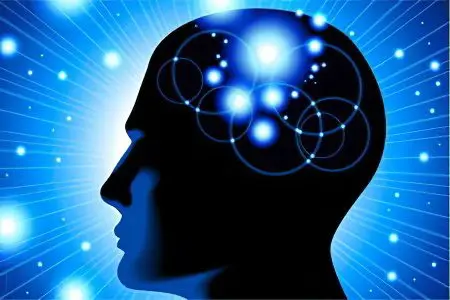
Proponents of this hypothesis believe that catechin hormones become the cause of panic fear. They are produced by the adrenal medulla. These include: adrenaline, dopamine, norepinephrine. The leading role in terms of attack development belongs to adrenaline. It causes the nervous system to activate, promotes an increase in heart rate. This is necessary to ensure that all organs are washed with blood in sufficient quantities. In parallel, there is an increase in blood pressure, breathing quickens. The brain at such moments receives the maximum amount of oxygen. In the same way, the body reacts to danger.
During a panic attack, catechins increase their numbers not only in the blood and urine, but also in the nervous tissue. It has been proven that the same panic attack develops with intravenous administration of adrenaline. Therefore, the more catechins in the human body, the higher its propensity to develop crises.
genetic theory
Panic attacks that occur in one identical twin have a 50% chance of occurring in another. In 15-20% of cases, blood relatives suffer from them. Therefore, there is a theory that the disease develops due to violations in the structure of certain genes. This means that the child has a tendency to its occurrence from birth. Panic disorder will make itself felt as soon as favorable conditions arise for this, for example, severe stress is transferred, hormonal changes occur in the body, a person becomes seriously ill, etc.
Theory of psychoanalysts
The famous Z. Freud studied panic attacks. He and his followers were of the opinion that they develop in people who have an intrapersonal conflict that remains unresolved, but repressed. Lack of emotional discharge leads to cardioneurosis.
behavioral theory
It is believed that panic attacks occur in people who suffer from an obsessive fear of drowning, getting into a disaster, etc.
cognitive theory
Adherents of this theory believe that a panic attack is a consequence of a person’s misinterpretation of his own feelings. For example, increased breathing and heart rate, which occurs in response to physical activity or fear, they regard as a signal of imminent death. This causes them to panic.
Development mechanism
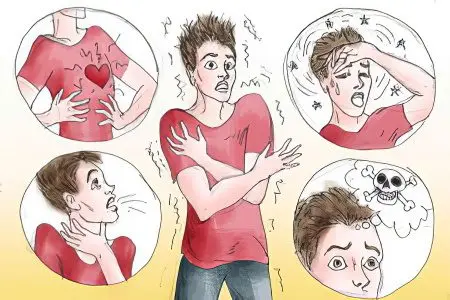
Under the influence of stress, adrenaline is released.
The hormone provokes vasoconstriction, increases breathing and heart rate.
Vasospasm leads to an increase in blood pressure.
Carbon dioxide is excreted from the body faster, which provokes an increase in anxiety.
Low CO2 causes dizziness and numbness of the extremities
Vessels spasm only on the periphery: in the skin, in fatty tissue and muscles. All blood rushes to the vital organs: to the brain and heart. The remaining tissues suffer from hypoxia, which leads to the accumulation of lactic acid in them. It enters the systemic circulation and contributes to increased panic.
Causes of panic attacks
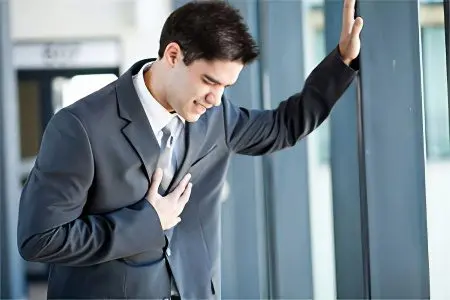
A panic attack can be caused by any strong experience, upcoming surgery, fear of illness, etc.
Most often, an attack develops in the presence of mental abnormalities, but sometimes it can be caused by such reasons as:
Myocardial infarction that a person suffered.
CHD.
Mitral valve prolapse.
Childbirth.
Pregnancy.
Early sexual intercourse.
Climax.
Pheochromocytoma (a tumor of the adrenal gland that produces adrenaline).
Thyrotoxic crisis.
Drug therapy: glucocorticosteroids, anabolic steroids, cholecystokines.
Panic attacks can act as symptoms of mental illness such as:
Phobias.
Depression.
Schizophrenia.
schizotypal disorder.
Mental disorders due to trauma, such as getting into an accident or natural disaster.
Obsessive-compulsive disorder. At the same time, a person is constantly haunted by the fear of illness or other disaster. As a result, he develops obsessive ideas. For example, he constantly checks the condition of electrical appliances, washes his hands too often, etc.
The provoking factors
Scientists have identified risk factors that increase the likelihood of a panic attack even in a healthy person.
They include:
Leading a sedentary lifestyle. Lack of physical activity is especially dangerous for teenagers. Going in for sports helps to get rid of negative thoughts and emotions, to find peace of mind, to put things in order in thoughts. Hypodynamia leads to restlessness, increased impulsivity, which leads to panic attacks.
Excessive consumption of drinks containing caffeine. The nervous system under the influence of this substance is depleted.
Smoking. Substances contained in tobacco smoke have a negative impact on human vessels, affect stress resistance.
Prolonged containment of emotions within oneself.
Chronic lack of sleep. Excessive amounts of adrenaline and other hormones enter the bloodstream, which leads to panic.
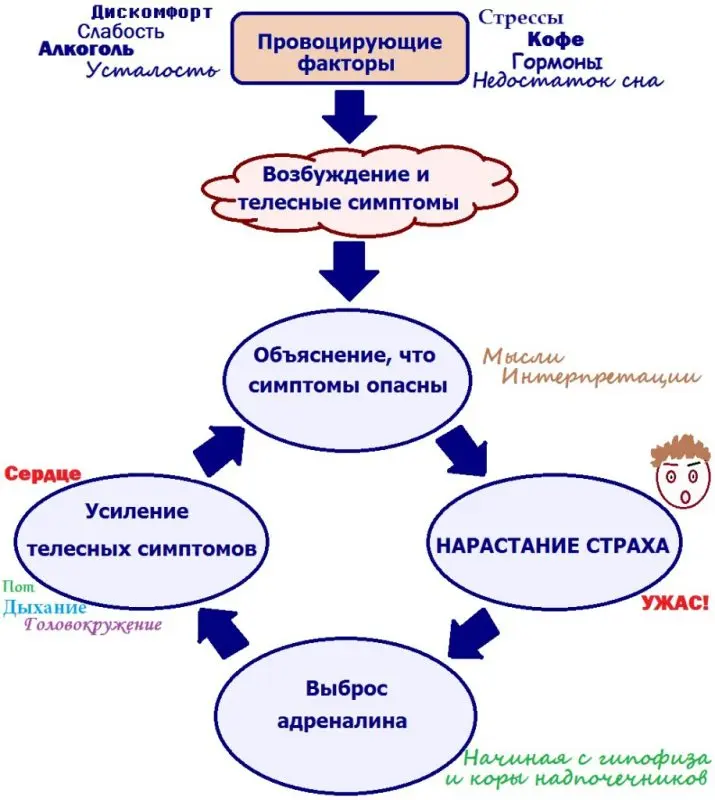
Panic attack symptoms
A panic attack is manifested by both physical and mental symptoms. They need to be considered separately.
Mental manifestations of a panic attack

Mental symptoms are most pronounced:
A person has a feeling that his life or health is in danger.
There is an acute fear of death. It is present in the first 2-3 attacks, after which it is replaced by fear of illness, heart attack, stroke, etc.
There is a fear of going crazy.
A lump rises in the throat.
The perception of the world is distorted. It may feel like time is slowing down.
A person looks at himself as if from the outside and cannot control his own actions.
Sometimes the state approaches semi-consciousness. Consciousness becomes clouded.
Some people try to hide or run away, while others, on the contrary, fall into a stupor.
These symptoms may vary. The same person has crises with a low emotional component, or attacks of pronounced fear, up to the state of passion. On average, they are repeated 1 time in 7 days. Sometimes seizures may not bother a person for months. Mild panic attacks can occur up to several times a day.
Physical symptoms

Physical manifestations of panic attacks include:
An increase in heart rate. Sometimes the heart beats so fast that the person feels like it is “bursting out of the chest.” This symptom develops under the influence of adrenaline and dopamine. Normally, the level of these hormones rises when there is a real danger. Thus, the body prepares to run.
Flushes of heat or chills. These sensations are due to the contraction of blood vessels penetrating the subcutaneous fat.
Increases respiration.
Dryness in the mouth. It occurs due to stimulation of the autonomic nervous system.
Sweating. In this way, the body cools itself on its own in order to optimize energy expenditure.
Diarrhea or constipation. Violation of the stool occurs due to the fact that the nutrition of the intestine worsens against the background of vascular spasm.
Pain in chest on left side.
Coldness of feet and hands.
Disorders in the work of the digestive system: nausea, abdominal pain, vomiting, liquefaction of feces.
Trembling in the hands and in the whole body.
Dizziness, clouding of consciousness, some detachment from reality, weakness. All these symptoms are due to a decrease in the level of carbon dioxide in the blood and in the cerebrospinal fluid. It leaves the body faster due to rapid breathing.
The average duration of a crisis is half an hour. Sometimes it ends early. The completion of the attack in children most often becomes excessive urination or vomiting. The patient feels tired, weak and depressed.
Sometimes similar symptoms occur with other diseases, such as stroke or asthma. However, there are still differences. The more severe the pathology, the worse the person feels.
Symptoms of an atypical panic attack

Sometimes the symptoms of a panic attack differ from the classical clinical picture. The person does not feel terrible fear. He just experiences a strong internal stress.
Physical manifestations may be absent altogether, or will be mild (there is a temporary failure in the work of one organ):
Loss of voice.
Deterioration of vision.
Nemota.
Unsteadiness of gait.
Feeling of tightness in the hands.
Doctors call such panic attacks hysterical neurosis. Most often they occur in crowded places.
What can trigger an attack?
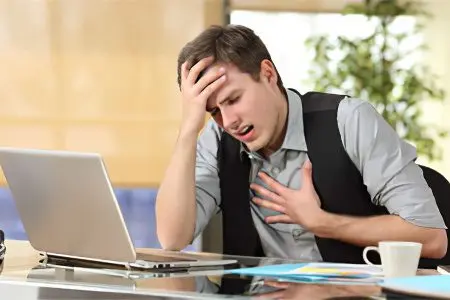
A panic attack can manifest in different ways.
There are 3 scenarios possible:
The person does not suffer from any disease. A panic attack occurs after a nervous or physical overexertion, or after an exit from a binge. Most often, people cannot find the objective cause of the attack, but they accurately indicate the time of its debut.
If a person suffers from prolonged depression or asthenic syndrome, then attacks are most often manifested by physical symptoms. They do not carry a bright emotional coloring. A panic attack with a full set of symptoms develops after suffering stress, surgery or illness.
A person’s anxiety can cause an attack.
What can aggravate an attack?
Some people take panic attacks worse. As a rule, a similar situation is observed in fearful individuals, with increased anxiety. Artistic and dramatic natures, as well as people with an unstable psyche, are prone to pronounced panic attacks.
The stronger the emotional excitement of a person during a panic attack, the more he will be afraid of the next attack.
What can ease the course of an attack?
Panic attacks are more easily tolerated by a person if he has the following personality characteristics:
Independence.
Internal fullness.
Industriousness.
Coolness.
Having your own point of view.
Night panic attacks

Most often, panic attacks develop in people at night. Moreover, strong-willed and restrained people are subject to them. On the eve of an attack, a person cannot sleep for a long time, he lies in bed, overcome by various anxieties and thoughts. This becomes a trigger for the development of an attack. Sometimes a person wakes up in the middle of the night, experiencing a feeling of terrible fear. He tries to run away and hide, although he does not even understand in which direction to move and from what exactly to run.
The attack will debut after 24:00. It can go on for a long time. After sunrise, the attack ends on its own. Relief comes from being with another person. Sometimes the panic subsides after the lights are turned on.
Symptoms of seizures that occur at night are no different from daytime attacks. Although sometimes they are more intense. Many people who experience nocturnal panic disorder do not see a doctor. They believe that the fear was due to nightmares, not the disease. This point of view is fundamentally wrong. You need to contact a specialist.
A person suffering from nocturnal panic attacks does not get enough sleep. All the next day he will experience drowsiness, fatigue and apathy. This leads to poor performance and inattention. If professional activity is connected with the control of mechanisms, then there is a real threat to life.
The fear of another attack does not allow him to fall asleep normally, and during the day he suffers from drowsiness. Inadequate rest leads to exacerbation of chronic diseases. This contributes to the aggravation of mental disorders. In addition to panic attacks, the patient will begin to suffer from depression, neurosis, etc.
Panic attacks during menopause

In women older than 45 years, symptoms appear that indicate the development of menopause.
They may resemble the symptoms of a panic attack:
Flushes of heat in the upper part of the body.
Hyperemia of the face, neck, chest.
Excessive sweating.
Headache.
An increase in heart rate.
Difficulty falling asleep.
Sleepiness during the daytime.
Excessive irritability.
You can distinguish the symptoms of menopause from the symptoms of a panic attack by the following signs:
No panic fear
The absence of anxiety, which does not allow you to think about anything else.
Improving well-being while taking hormonal drugs. The gynecologist prescribes such medicines.
Panic attacks during menopause are not uncommon. They disturb every 6 woman.
The risks of their occurrence increase in the presence of the following violations:
Migraine.
Diseases of the heart and blood vessels.
Emphysema.
Allergy.
Thyrotoxicosis.
Past panic attacks that preceded menopause.
Seizures can be triggered by factors such as:
Emotional shock.
Alcoholism.
Chronic fatigue.
Physical overload.
During menopause, the female body is especially vulnerable, so panic attacks can be triggered by even minor experiences.
Vegetative-vascular dystonia
Dystonia is characterized by an imbalance between the sympathetic and parasympathetic NS. This failure can occur at any age. Stress, injuries, diseases, blood loss often become a triggering factor. It is not necessary to exclude a hereditary predisposition to VVD.
The clinical picture of dystonia is diverse. The leading symptom is often chest pain, heart rhythm disturbances, hyperhidrosis, jumps in blood pressure, asthma attacks, irritability. These complaints are presented by patients to the doctor. However, during the examination, no pathologies from the internal organs are detected.
Against the background of VVD, panic attacks often develop. Attacks are accompanied by tremors of the limbs, the appearance of cold perspiration, hot flashes, numbness of the arms and legs. Man experiences an animal fear of death.
The diagnosis of “VVD with panic attacks” indicates that the internal organs of a person are healthy. Therapy should be aimed at combating the attacks themselves.
Symptoms that occur between attacks
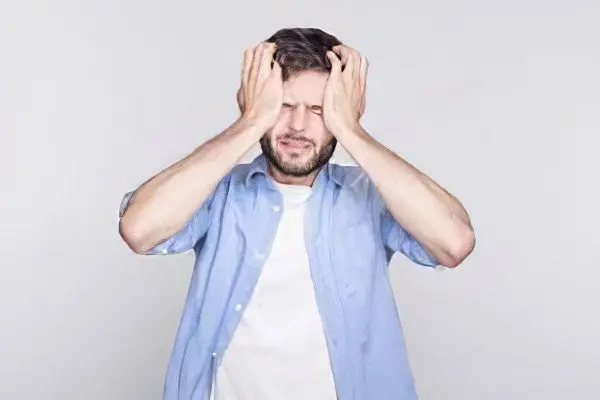
In addition to the symptoms that occur during a panic attack, a person may be disturbed by the following health disorders:
Persistent feeling of anxiety.
Fear of being in the situation in which the first panic attack occurred.
Formation of phobias.
Chronic Fatigue Syndrome. A person will experience constant weakness, his cognitive functions decrease, and tearfulness increases. He is always in a bad mood.
Depression. The person will focus on their inner experiences.
Hysterical seizures, which may be accompanied by loss of consciousness.
Fear of the future.
Presence of obsessive thoughts and thoughts.
With panic attacks provoked by VVD, symptoms such as:
Sensation of an acute lack of oxygen.
Chest pain.
Dryness in the mouth.
Nausea, diarrhea, bloating.
An increase in body temperature up to 37,5 ° C. Subfebrile condition is not characterized by any other signs of infection or a cold.
Chills.
Dizziness.
Excessive sweating.
How to act during a panic attack?

When developing an attack of a panic attack, you should adhere to the following recommendations:
Measure body temperature, blood pressure, pulse, respiratory rate. All indicators will be inflated. However, knowledge of these health parameters will make it possible to distinguish a panic attack accompanied by a sympathoadrenal crisis (pressure is increased, the pulse is frequent) from a panic attack with a vagoinsular crisis (the main symptoms are caused by excessive activity of the parasympathetic nervous system). In the latter case, the pulse will be slow. Depending on the type of panic attack, the rules for helping the patient will differ.
Think about the drugs the person has taken. Means for the treatment of diseases of the cardiovascular and nervous system can provoke a panic attack. It is possible that further therapy should be discontinued. If a person is sure that the attack is due to drugs, then you can take Smecta, Activated charcoal or another similar drug. Be sure to read the instructions for use. It is possible that there are quite specific instructions in it.
With an increase in heart rate, you need to start coughing. This will bring it back to normal.
With the appearance of pain in the chest on the left side, you should not wait for the end of the attack. You need to take 1 tablet of Aspirin and call a medical team.
An ambulance call is required in the following cases:
The attack lasts more than half an hour.
Before the onset of the attack, hallucinations arose, there was a haze before the eyes, the feeling of the reality of what was happening disappeared. Thus, both migraine and temporal encephalopathy requiring immediate therapy can manifest itself.
The face becomes asymmetrical, and the movements of the limbs are uncoordinated. Goosebumps run across the skin.
Body temperature rises, sore throat and muscles appear,
The patient was previously diagnosed with bronchial asthma. Before the arrival of the medical team, you need to take the drug that he always used to stop attacks.
With an increase in blood pressure and an increase in heart rate up to 65 beats per minute, you need to take Anaprilin. A 10 mg tablet is placed under the tongue. This will facilitate the work of the heart, the pressure will decrease, the pulse will normalize. Under the influence of the drug, the body stabilizes the work of the sympathetic nervous system.
If a panic attack was provoked by an attack of tachycardia, then you can use a simple trick. The thumb of the left hand should be raised up, and the remaining fingers should be folded into a fist. At the base of the thumb, a fossa is formed, represented by three tendons. You need to place the middle finger of your right hand in it and feel for a pulse. Holding this section, you need to count to 60. The counting rate should not exceed the speed of the second hand. After such actions, the panic attack should end. If a person feels that his pulse is very low, it is necessary to call a medical team. Prior to their arrival, you need to focus on the depth and frequency of breathing.
You need to inhale deeply, taking a breath at the expense of times. After 2 seconds, the air is exhaled. Gradually increase the depth of inspiration, bringing the count to four. You need to mentally imagine how the air fills the lungs. You need to breathe with your stomach.
During a panic attack, you must force yourself to smile. Let the mouth stretch into an unnatural smile. Facial expressions are firmly connected with the brain, so he will soon react to them with positive emotions.
To distract yourself, you need to concentrate on an unusual activity. For example, you can start counting pigeons.
A person must convince himself that a panic attack does not pose a threat to life and will end soon.
Panic Attack Diagnosis

When examining a patient with a panic attack, even a specialist will not always be able to immediately make the correct diagnosis. To clarify it, you will need to evaluate reflexes, examine the skin, perform an ECG, count the pulse and heart rate, and measure the level of oxygen in the blood. Only after the results of the diagnosis are known, it is possible to make a diagnosis.
When the attack is over, the patient is examined to identify pathologies such as:
Tachycardia and other serious heart rhythm disturbances. The patient is shown daily ECG monitoring.
Ischemia of the heart muscle. Perform ECG at rest and during exercise, ultrasound of the heart.
Stroke and brain tumor. The patient is shown the passage of CT or MRI.
Bronchial asthma. Perform allergy and breath tests.
Internal bleeding. Perform ultrasound of the internal organs.
Mental diseases. A psychiatric consultation is required.
A panic attack is referred to as:
Within 10 minutes, the attack is gaining maximum intensity.
During an attack, a person experiences animal fear.
The patient has at least 4 of the following symptoms:
Lump in throat.
Cardiopalmus.
Dryness in the mouth.
Pain or discomfort in the abdomen.
A feeling of lack of air.
Fear of death.
Dizziness.
A state close to fainting.
Feeling hot or cold.
Fear of going crazy.
Body numbness.
Chest pain.
Increased sweating.
To diagnose an atypical panic attack, it is necessary to fix such symptoms as: periodic deterioration in hearing or vision, the occurrence of seizures, and gait disturbances. If the attack happens once and never happens again, then this cannot be regarded as a panic disorder.
Panic attack treatment and prevention
Method of assistance | When a person is alone | When relatives can help |
Emotional Support | You need to convince yourself that the attack does not pose a threat to life. the body is just doing the exercise. | Relatives must convince the person that the attack will not harm his health. You need to make it clear that you will be next to him and come to the rescue at any time. |
Breathing exercises | You need to focus on breathing, take deep breaths and long exhalations. You can breathe into a paper bag. | You need to breathe with the patient together, holding your breath for 2, then 3 and 4 seconds. |
Physiotherapy | You can take a contrast shower, massage your ears or fingertips. Rubbing lavender oil into the palm of your hand helps a lot. | Massage your back, neck and shoulders. You can use aromatic oils. A person is offered tea with mint or lemon balm, with linden or chamomile. Joint video games, watching a movie, reading a book, coloring pictures help to calm down. |
Distraction techniques | You can start counting any objects or objects on the street. You can try to get angry at the attack and “bet” with him that you will defeat him. | Together, count the objects burning in the apartments, windows, cars, birds. You can pinch a person a little. Good soothing joint singing songs. |
Herbal medicines | 10 drops of the drug help to calm down (optional):
The selected drug is diluted in a glass of water. | |
Taking medications | Only a doctor can prescribe any drug. It is strictly forbidden to increase the dose on your own. During therapy with antidepressants, you can not drink alcohol, cheese, smoked meats, sauerkraut, legumes, pickled and dried fish are removed from the menu. Alcoholic drinks are strictly prohibited. | |
After the attack is managed to cope, you need to continue treatment at home.
You should not rely on medicines, you need to follow some recommendations of specialists:

relax with proper breathing technique. It is necessary to smoothly fill the lungs, mentally imagining how oxygen penetrates into every cell of the body. You can enhance the effect if you constantly pronounce a given phrase, for example, “I am calm and relaxed.” After relaxation, lightness should be felt in the head and body.
The tension-relaxation technique. It is necessary to take the most comfortable position, sitting on a chair. Clothing should not restrict movement. The toes are pulled out, straining the calves and feet, they remain in this position for several seconds, and then relax. After that, you need to rest your heels on the floor, raise your fingers up, tighten your calves and feet for 10 seconds, then relax. Then the legs are lifted up, kept parallel to the floor for 10 seconds.
Meditation. First you need to turn on pleasant music, sit down with a straight back and close your eyes. It is best to meditate alone. Thoughts need to be concentrated on breathing, thinking that panic attacks will no longer bother. You should not expect that after one session of meditation recovery will come. The effect will be noticeable only when a person learns to get a charge of vivacity and control his emotions. As a rule, the development of this technique takes about six months.
Doing sports. Physical activity contributes to the release of endorphins into the blood. Useful cycling and rollerblading, you can visit the pool and dancing. Sometimes even a simple morning run is the best cure for panic attacks.
Regular muscle relaxation. All techniques are useful: auto-suggestion “tension-relaxation”, yoga, meditation, visualization.
Here are some tips to help increase your body’s resistance to stress:
The rise of self-esteem. No need to compare yourself with others and look for flaws in yourself. You should record all your achievements, wear bright clothes, learn to say “no”.
It is easier to relate to your mistakes, not to go in cycles in them.
Watch programs that set you up for positive.
Do things that bring you pleasure.
Learn new things.
Engage in drawing (art therapy).
High-quality and high-grade rest. It’s important to get enough sleep.
Keeping a personal diary. It should note when the seizures occurred and what preceded them. Analysis of the situation helps to better resist panic.
Refuse or reduce the amount of alcohol consumed, coffee, tea, nicotine.
Eat right, in small portions and on schedule.
Take herbal decoctions and teas based on linden, mint, hop cones, motherwort, valerian, chamomile.
Include foods such as:
Rosehips, bell peppers, citrus fruits, apples and kiwis are all sources of ascorbic acid.
Avocados, brown rice, bananas, beans – they contain magnesium.
Turkey, beef, grain products – they contain a lot of zinc.
Cottage cheese, cheese, tofu, salmon – they are rich in calcium. However, these products are contraindicated in patients undergoing therapy with Aurorix or Pyrazidol.
The psychotherapist may prescribe such psychotherapeutic techniques as:
Psychoanalysis.
Gestalt therapy.
Body-oriented psychotherapy.
Systemic family psychotherapy.
NLP.
Hypnosis technique.
Desensitization and processing by eye movements.
Panic attacks in children

Panic attacks in children and adolescents are not common, but they cannot be ruled out. They develop in both girls and boys. Shy and responsible children with a high level of anxiety are prone to seizures.
Stress can provoke a panic attack: the death of close relatives, the divorce of parents, difficulties in communicating with peers. Most often, adolescents aged 15-19 years old, as well as boys and girls during puberty, suffer.
In preschoolers, panic attacks are manifested by respiratory arrest. Sometimes parents confuse them with respiratory diseases, but the body temperature does not rise.
In older children, there are malfunctions in the work of the heart, increased breathing. They have increased blood pressure, increased sweating. They indicate pain in the abdomen, fear and anxiety. During an attack, vomiting and diarrhea often develop. The attack ends with the discharge of a large amount of urine. In general, the crisis has the same clinical picture as in an adult.
To make a diagnosis, you need to contact a child psychiatrist. It is important to avoid visiting places where the child had a panic attack. Be sure to exclude meningitis, epilepsy, stroke, diseases of the cardiovascular system.
Treatment of panic attacks in children is carried out in the following areas:
Taking medicines. The most commonly prescribed antidepressants are serotonin reuptake inhibitors. As an additional therapy, nootropics, B vitamins, diuretics, venotonics can be prescribed.
Psychotherapeutic help. Good results can be obtained with the use of cognitive-behavioral therapy techniques.
Physiotherapy treatment: electrophoresis with magnesium sulfate, bromelectroson.
Parents should distract the child from his fears, teach him to relax, help him adapt in society and fight his phobias.









